Cyrus The Great Cylinder – Legacy Of The Ancients
A. Sutherland - AncientPages.com - The Cyrus Cylinder, sometimes referred to as the first “bill of human rights,” traces its origins to the Persian king Cyrus the Great’s conquest of Babylon in the sixth century B.C.
Almost 2,600 years later, its remarkable legacy continues to shape contemporary political debates, cultural rhetoric and philosophy.
One of the most celebrated objects in world history, the Cyrus cylinder is a fragmentary clay cylinder with an Akkadian inscription of thirty-five lines discovered in a foundation deposit by A. H. Rassam during his excavations at the site of the Marduk temple in Babylon in 1879.

In this text, a clay cylinder now in the British Museum, Cyrus describes how he conquers the old city. Nabonidus is considered a tyrant with strange religious ideas, which causes the god Marduk to intervene. That Cyrus thought of himself as chosen by a supreme god, is confirmed by Second Isaiah; h is claim that he entered the city without struggle corroborates the same statement in the Chronicle of Nabonidus.
A second fragment, containing lines 36-45, was later identified in the Babylonian collection at Yale University. The total inscription, though incomplete at the end, consists of forty-five lines, the first three almost entirely broken away.
The text contains an account of Cyrus’ conquest of Babylon in 539 B.C.E., beginning with a narrative by the Babylonian god Marduk of the crimes of Nabonidus, the last Chaldean king (lines 4-8).
Then follows an account of Marduk’s search for a righteous king, his appointment of Cyrus to rule all the world, and his causing Babylon to fall without a battle (lines 9-19). Cyrus continues in the first person, giving his titles and genealogy (lines 20-22) and declaring that he has guaranteed the peace of the country (lines 22-26), for which he and his son Cambyses have received the blessing of Marduk (lines 26-30).
He describes his restoration of the cult, which had been neglected during the reign of Nabonidus, and his permission to the exiled peoples to return to their homeland (lines 30-36). Finally, the king records his restoration of the defenses of Babylon (lines 36-43) and reports that in the course of the work he saw an inscription of Aššurbanipal (lines 43-45).
The Cylinder—a football-sized, barrel-shaped clay object covered in Babylonian cuneiform, one of the earliest written languages—announced Cyrus’ victory and his intention to allow freedom of worship to communities displaced by the defeated ruler Nabonidus. At the time, such declarations were not uncommon, but Cyrus’ was unique in its nature and scope.
When contextualized with other contemporary sources, such as the Bible’s Book of Ezra, it becomes evident that Cyrus allowed displaced Jews to return to Jerusalem.
“One of the goals of this exhibition is to encourage us to reflect that relations between Persians and Jews have not always been marked by the discord that disfigures the political map of the Near East today,” said Julian Raby, The Dame Jillian Sackler Director of the Arthur M. Sackler Gallery and the Freer Gallery of Art.
“Cyrus was the very image of a virtuous rule¬—inspiring leaders from Alexander the Great to Thomas Jefferson—so it is apt that the first time it will be seen in the West is in Washington, D.C.”
Under Cyrus (ca. 580–530 B.C.), the Persian Empire became the largest and most diverse the world had known to that point. Subsequent generations of rulers considered it to be the ideal example of unified governance across multiple cultures, languages and vast distances.
Cyrus’ declarations of tolerance, justice and religious freedom provided inspiration for generations of philosophers and policymakers, from Ancient Greece to the Renaissance, and from the Founding Fathers to modern-day Iran, so much so that a copy now resides in the United Nations’ headquarters in New York.
The message of the Cylinder and the larger legacy of Cyrus’ leadership have been appropriated and reinterpreted over millenia, beginning with its creators. The Babylonian scribe who engraved the Cylinder attributed Cyrus’ victory to the Babylonian god Marduk, a stroke of what could be considered royal and religious propaganda.
In the fourth century B.C., the Greek historian Xenophon wrote Cyropaedia, a text that romanticizes the philosophies and education of Cyrus as the ideal ruler, which greatly influenced both Alexander the Great and, much later, Thomas Jefferson in his creation of the Declaration of Independence.
Rediscovered in 1879, the document immediately entered the fray of public debate as invaluable proof of the historical veracity of events described in biblical scripture. In the early 20th century, supporters of the creation of the state of Israel compared the actions of British King George V to those of Cyrus, allowing Jews to return to Jerusalem.
“The Cyrus Cylinder and Ancient Persia” includes related objects that highlight some of the artistic, cultural and historical achievements of the Achaemenid Empire (550–330 B.C.) of Iran, such as architectural fragments, finely carved seals and luxury objects from the Oxus Treasure.
Written by – A. Sutherland AncientPages.com Senior Staff Writer
Copyright © AncientPages.com All rights reserved. This material may not be published, broadcast, rewritten or redistributed in whole or part without the express written permission of AncientPages.com
Expand for referencesMore From Ancient Pages
-
 Gengen Wer – Goose God Who Guarded The Celestial Egg Containing The Life Force In Egyptian Beliefs
Featured Stories | Apr 22, 2021
Gengen Wer – Goose God Who Guarded The Celestial Egg Containing The Life Force In Egyptian Beliefs
Featured Stories | Apr 22, 2021 -
 Anglo-Saxon Previously Unknown Monastic Or Trading Center – Discovered
Archaeology | Mar 7, 2016
Anglo-Saxon Previously Unknown Monastic Or Trading Center – Discovered
Archaeology | Mar 7, 2016 -
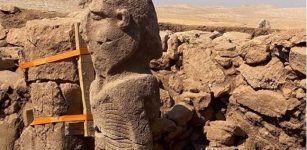 World’s Oldest Human Statue Discovered At Karahan Tepe, Turkey
Archaeology | Oct 30, 2023
World’s Oldest Human Statue Discovered At Karahan Tepe, Turkey
Archaeology | Oct 30, 2023 -
 Sodré Astrolabe, Found On Portuguese Armada Shipwreck Is The Oldest In The World
Archaeology | Mar 19, 2019
Sodré Astrolabe, Found On Portuguese Armada Shipwreck Is The Oldest In The World
Archaeology | Mar 19, 2019 -
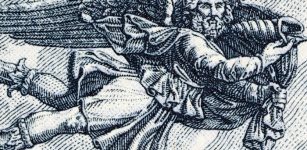 Boreas – Mighty North Wind God In Greek Mythology
Featured Stories | Mar 26, 2023
Boreas – Mighty North Wind God In Greek Mythology
Featured Stories | Mar 26, 2023 -
 Cedar – Sacred Tree With Medicine Power In Native American Beliefs
Featured Stories | Jan 6, 2018
Cedar – Sacred Tree With Medicine Power In Native American Beliefs
Featured Stories | Jan 6, 2018 -
 Unexplained Mysteries Of The Superstition Mountains – A Gateway To Other Worlds?
Featured Stories | Dec 15, 2020
Unexplained Mysteries Of The Superstition Mountains – A Gateway To Other Worlds?
Featured Stories | Dec 15, 2020 -
 Brief History Of Abortion – From Ancient Egyptian Herbs To Fighting Stigma Today
Featured Stories | Oct 3, 2023
Brief History Of Abortion – From Ancient Egyptian Herbs To Fighting Stigma Today
Featured Stories | Oct 3, 2023 -
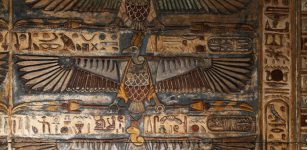 Never-Before-Seen Colorful Inscriptions And Reliefs At The Esna Temple, Egypt Revealed After Restoration
Archaeology | May 16, 2022
Never-Before-Seen Colorful Inscriptions And Reliefs At The Esna Temple, Egypt Revealed After Restoration
Archaeology | May 16, 2022 -
 Mysterious Hornet Spook Light In Missouri
Featured Stories | Apr 22, 2020
Mysterious Hornet Spook Light In Missouri
Featured Stories | Apr 22, 2020 -
 Aboriginal Legends Tell Millennia-Old Stories Of Events In The Sky
Myths & Legends | Mar 6, 2015
Aboriginal Legends Tell Millennia-Old Stories Of Events In The Sky
Myths & Legends | Mar 6, 2015 -
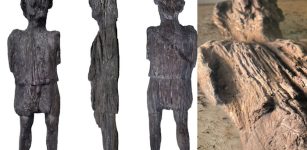 Unexpected Discovery Of Rare Ancient Roman Carved Wooden Figure In Buckinghamshire
Archaeology | Jun 11, 2022
Unexpected Discovery Of Rare Ancient Roman Carved Wooden Figure In Buckinghamshire
Archaeology | Jun 11, 2022 -
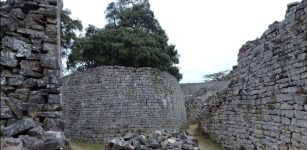 Great Ruins of Zimbabwe: Unsolved Secrets Of Bizarre Buildings Without Windows And Doors
Civilizations | Jun 24, 2015
Great Ruins of Zimbabwe: Unsolved Secrets Of Bizarre Buildings Without Windows And Doors
Civilizations | Jun 24, 2015 -
 Ancient DNA Reveals Origin Of First Bronze Age Civilizations In Europe
Archaeology | May 8, 2021
Ancient DNA Reveals Origin Of First Bronze Age Civilizations In Europe
Archaeology | May 8, 2021 -
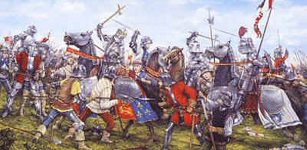 On This Day In History: The Battle of Blore Heath – Sep 23, 1459
News | Sep 23, 2015
On This Day In History: The Battle of Blore Heath – Sep 23, 1459
News | Sep 23, 2015 -
 Controversial Prehistoric Bronze Gears Of Peru
Artifacts | Aug 15, 2015
Controversial Prehistoric Bronze Gears Of Peru
Artifacts | Aug 15, 2015 -
 Wendigo: Cannibalistic Shapeshifter In Mythology Of Indians Of North America And Canada
Featured Stories | Sep 3, 2016
Wendigo: Cannibalistic Shapeshifter In Mythology Of Indians Of North America And Canada
Featured Stories | Sep 3, 2016 -
 Skaftö Wreck’s Cargo Gives New Answers About 15th Century Trade Routes
Archaeology | Oct 25, 2022
Skaftö Wreck’s Cargo Gives New Answers About 15th Century Trade Routes
Archaeology | Oct 25, 2022 -
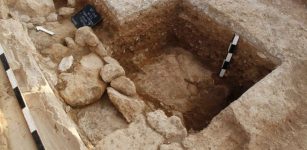 Oldest Houses Of Nea Paphos In Cyprus – Discovered
Archaeology | Apr 12, 2017
Oldest Houses Of Nea Paphos In Cyprus – Discovered
Archaeology | Apr 12, 2017 -
 Ancient Secrets Of Rare Maps Of Judah Ben Zara Revealed
Artifacts | Sep 20, 2022
Ancient Secrets Of Rare Maps Of Judah Ben Zara Revealed
Artifacts | Sep 20, 2022



